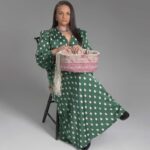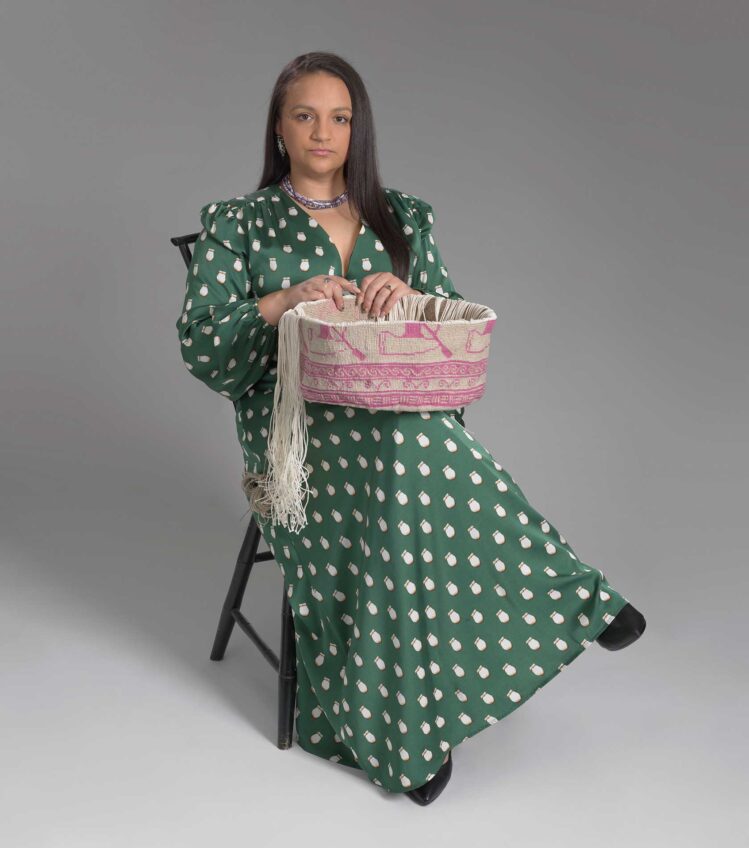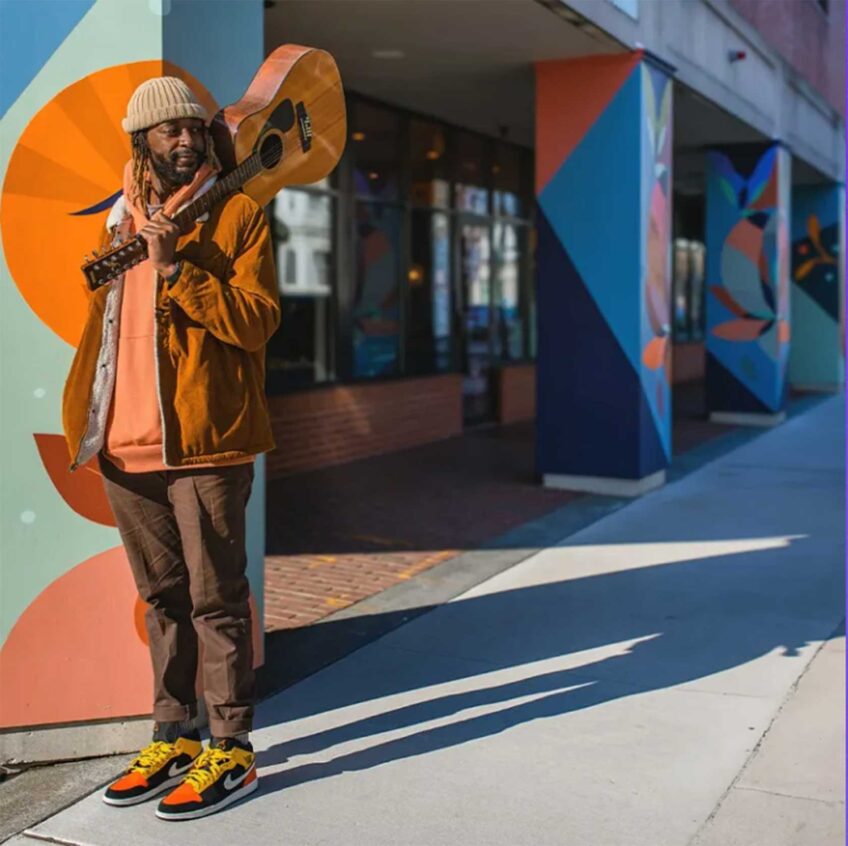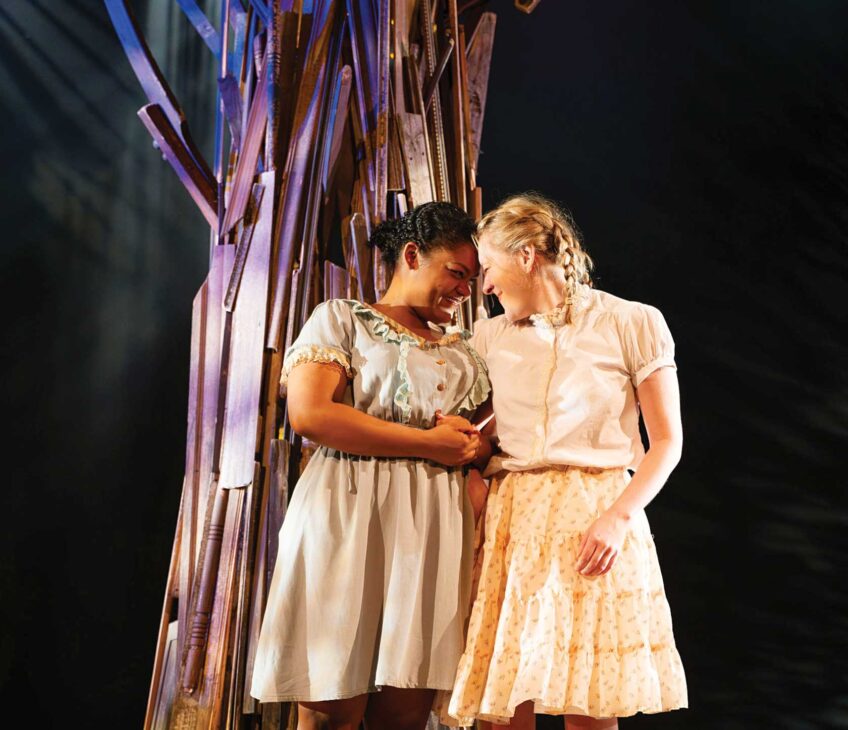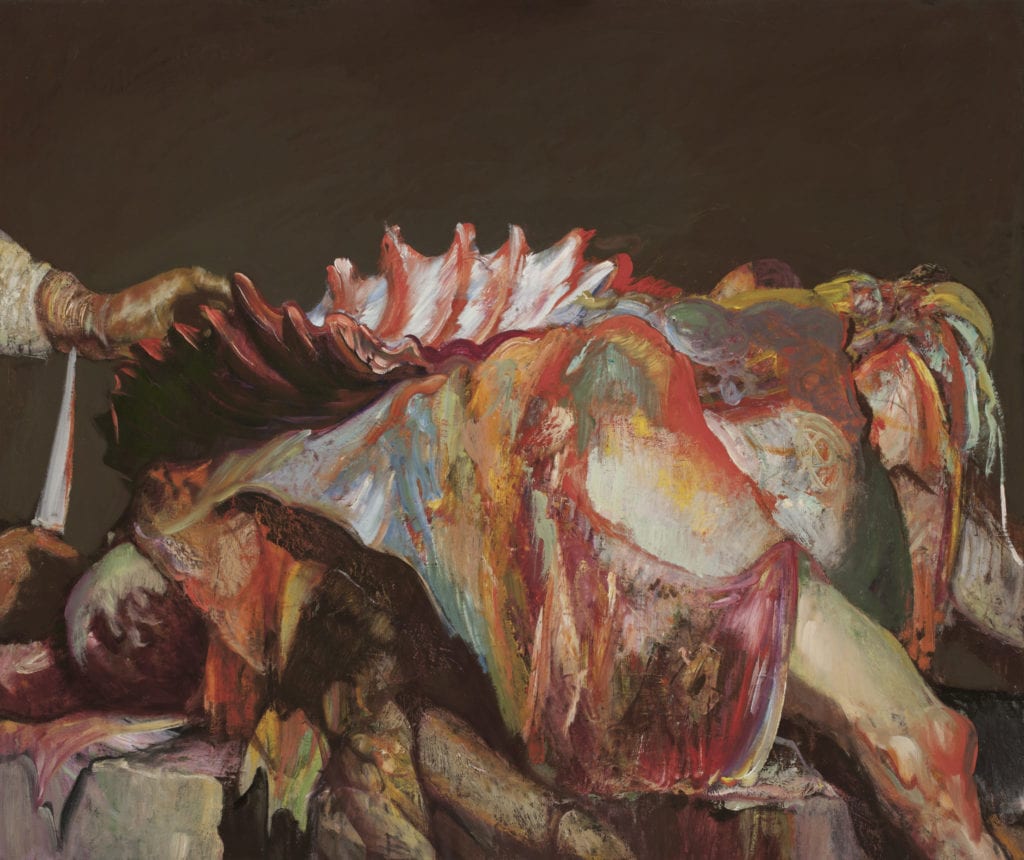
Some paintings in the exhibition “Hyman Bloom: Matters of Life and Death,” on view at the Museum of Fine Arts Boston through Sunday, February 23, seduce with sumptuous, jewel-like colors and flowing forms. Among its commanding images are opulent renderings of synagogue chandeliers, brides whose veils stream with flowers, and unflinching portrayals of frail elders. Other works are more challenging—even repugnant, such as closeups of corpses and cadavers undergoing autopsies, yet these too pulse with energy and a phosphorescent glow.

“The Bride” 1941, Hyman Bloom (American, born in Lithuania, now Latvia 1913–2009) Oil on canvas, The Museum of Modern Art, New York. © Stella Bloom Trust. Courtesy, Museum of Fine Arts, Boston
Organized by Erica Hirshler, curator of American paintings, the exhibition presents about 70 paintings and drawings, on loan from public and private collections, that explore the lifelong pursuit of Boston-based artist Hyman Bloom (1913–2009) to render the beauty of life in its endless state of transformation.
Bloom was a figurative painter at a time when abstraction was on the rise. He is heir to a European painting tradition that encompasses Rembrandt as well as 19th century narrative expressionists such as Egon Schiele, Chaim Soutine, and Georges Rouault, who contorted the human face and form to convey intense emotion. Bloom’s shimmering synagogue chandeliers and brides also call to mind the surreal sensuousness of Gustav Klimt.
Raised in an Orthodox Jewish family, Bloom lived as an assimilated Jew, but Judaic traditions infuse his works as well as a spiritual quest that encompassed Eastern religions, mysticism, Indian tantric art, Chinese painting, and psychedelic drugs.
In 1920, his family moved from a village in Latvia (now Lithuania) to Boston’s immigrant enclave in the West End. At age 14, Bloom won a scholarship to take art classes at the MFA and also studied art at the West End Settlement House with painter Howard K. Zimmerman, who encouraged the young artist to render inner life rather than models, a lesson he applied with ever-increasing depth throughout his career. Early on, Bloom’s talents were recognized and supported, and in 1942, he held his debut exhibition in a prestigious survey at the Museum of Modern Art in New York.
In her 2005 study of Boston’s mid-century figurative expressionists, art historian Judith Bookbinder quotes Bloom as he describes the colors of a decaying corpse he had seen in a morgue as “harrowing” and yet “beautiful…iridescent and pearly.”
The paradoxical interplay of life and death and decay and beauty in Bloom’s works was explored in a symposium, “Hyman Bloom: Spirituality in Art,” held at the MFA on Sunday, February 9, and hosted by Hirshler. Guest speakers were Henry Adams, Professor of Art History, Case Western Reserve University; Marcia Brennan, PhD, professor in Department of Religion, Rice University; and “New York Times” art critic Holland Cotter.
Henry Adams began by asking why it had taken so long to have this show. His answer: although Bloom is widely recognized as a major post-World War II American artist, his work explores with uncompromising gravitas the interconnected realities of life and death.
Bloom spent his later years in Nashua NH, and Adams placed the artist within the tradition of New England spiritual seekers such as Herman Melville, whose book “Moby Dick,” follows an epic quest for a great white whale, and the 19th century Transcendentalists residing in Concord MA, such as Ralph Waldo Emerson.
Marcia Brennan found in Bloom’s radiant paintings of synagogue chandeliers an image of the artist himself as a creator of “ever-shifting constellations of luminous presences” whose work is about “facing death and seeing life.”
Brennan read an excerpt from Holland Cotter’s obituary of Bloom, which quotes a 1996 catalog essay by Dorothy Abbott Thompson in which the artist says that he hoped to make death “more understandable, even more acceptable, more familiar, more knowable,” and describes the “Jewish feeling” in his art as “a weeping from the heart.”
Bloom also tells Thompson of a life-changing experience of enlightenment in 1939, “a conviction of immortality, of being part of something permanent and ever-changing, of metamorphosis as the nature of being….Everything was intensely beautiful, and I had a sense of love that was greater than I had ever had before.”
Providing a musical interlude that would have pleased Bloom, the Mirasi Collective, a local ensemble whose repertoire draws on South Asian musical traditions, performed two of its compositions. Drummer Ishwin Dembla accompanied Michael Dwan Singh, whose sarangi, a stringed instrument not unlike a sitar, emitted a sound of tender yearning. Above them a projection of Bloom’s painting “The Hull” (1952) showed a closeup of an autopsy, a sheet of skin draping over a man’s splayed leg like a veil.
Holland Cotter, recipient of the 2009 Pulitzer Prize for Criticism, spoke of a personal bond he felt with Bloom, although he never met the artist. They were both raised in Boston and spent a lot of time exploring the MFA’s collection of Asian art, which he described as “one of the greatest of any western museum.” Like Bloom, Cotter made a pilgrimage to India and also sought revelation by trying LSD. “He went to the Ritz for lunch after, so I assume it was a positive experience,” said Cotter, calling his own “nightmarish.”
As a teenager working summers as a hospital orderly, Cotter “saw the dead brought back to life and the living brought out dead,” and helped prepare bodies for post-mortem exams.
Writing about art, Cotter is drawn to “forthright, elemental images of life and death,” including medieval, Latino, African, post-AIDS, and African American art. When he first saw Bloom’s paintings, he found them “gorgeous and repellent,” and came to understand them as “spiritual metaphors.”
Noting that Bloom’s singular preoccupation with rendering tough spiritual truths set him apart from his times, Cotter said, “He would have liked the music we heard just now,” and described a show that he wished the artist could have seen, a 1993 exhibition of artist-built, consecrated altars at the Museum for African Art in New York City. Exploring the Central African concept of an altar as a threshold between worlds, “the show drew entirely different populations,” said Cotter. “People from New Jersey and the Bronx came to worship.”
Such risky shows are rare, said Cotter, describing the contemporary art market as “increasingly bad — a product line industry with a seasonal supply of art lookalikes that sell well.”
In contrast, Cotter concluded, there is Hyman Bloom, “solitary, hard to place in art, but a great, great blessing for us all.”



